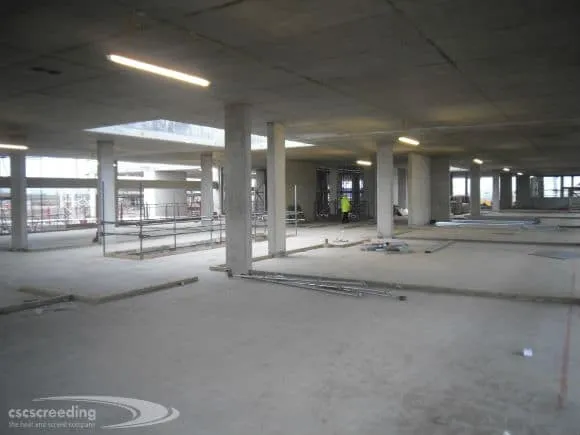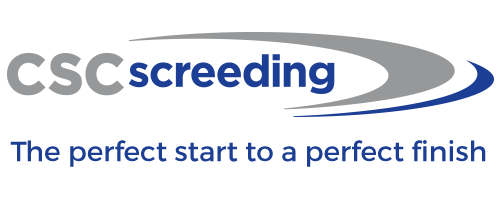
Achieve Tight Flatness Tolerances the Easy Way

Levelling or smoothing compounds to achieve flatness?
Traditional, free flowing , self levelling or smoothing screeds: do you know which screed to use when? Our article will help you decide which screed is best for you project, read on to find out more.
Since the appearance, performance and service life of a final floor are determined by the characteristics of the substrate, the most logical approach to flooring design is to select the floor covering first and specify the type of screed along with minimum/maximum thickness, curing/drying time, hardness, soundness, levelness, surface regularity and other design parameters for that particular type of floor afterwards.
Due to their characteristics, traditional and free-flowing anhydrite screeds have become the preferred choice for most flooring projects. Whilst traditional screeds offer versatility in terms of mix ratio, proprietary admixtures, and compatibility with different floor coverings, free-flowing anhydrite screeds are less susceptible to cracking and shrinking, and can be laid at thinner depths than their Portland cousins, and therefore potentially reducing the drying time.
However, expert screeders recommend proprietary formulations like levelling and smoothing compounds when finer tolerances are required.
Levelling and Smoothing Compounds
Although many professionals use the terms “levelling” and “smoothing” interchangeably, these two products may not be suitable for the same projects.
Levelling compounds
Providing fast-setting cement-based formulations of a fluid consistency, levelling compounds are intended to level up differences in thickness and achieve SR1 (±3mm) surface tolerances. They can be used in virtually any application, including industrial projects, and are compatible with most bases (e.g. cement or anhydrite-based products).
Smoothing Compounds
Smoothing compounds can be used to correct the finest deviations and imperfections in the sub-floor (e.g. slab texture, aggregate shape, etc.), and enhance the absorption of primers and adhesives. They are also selected to achieve SR1 tolerances for the installation of sensitive floor finishes like vinyl, linoleum and carpet. Since these compounds are not as sturdy as levelling compounds, they cannot be used without a base substrate or in industrial settings.
Though levelling compounds can be used on their own, the cost would be prohibitive. Therefore, just like smoothing compounds, they are typically used to significantly thin depths, on top of prepared screed surfaces.
**A Quick Guide to Screed Technical Specifications
| Traditional Screed | Free-Flowing Screed | Levelling Compound | Smoothing Compound | |
| Drying Time | Up to 110 days(75mm thickness) | Up to 80 days(60mm thickness) | Up to 24hrs | Up to 24 hrs |
| Light Foot traffic | up to 48 hrs | after 12 hrs | after 2 hrs | after 2 hrs |
| Suitability with UFH | suitable | suitable | potential suitability problems | potential suitability problems |
**Note: The information in this article is a general guide only. Since there are many products on the market, manufacturer’s instructions and/or the technical data sheets should be checked and professional advice should be sought to avoid potential compatibility problems
Only one phone call away, CSC Screeding is on hand to help you with any of these matters. Also, our professionals will gladly provide expert advice and tips on choosing the right type of screed for your project. For technical assistance or a free, no-obligation quote, visit us at www.cscscreeding.co.uk.
